- +381 23 562 566
- Monday - Friday 08:00 - 20:00 / Saturday 08:00 - 13:00
Portfolio

Exhibition activities
C U R R E N T:
IMAGE 2021
December 13 - 31, 2021

14th Biennial of Watercolour
September 20 - October 28, 2021
(no official info yet)

Vesna Perunović
August 3 - August 26, 2021
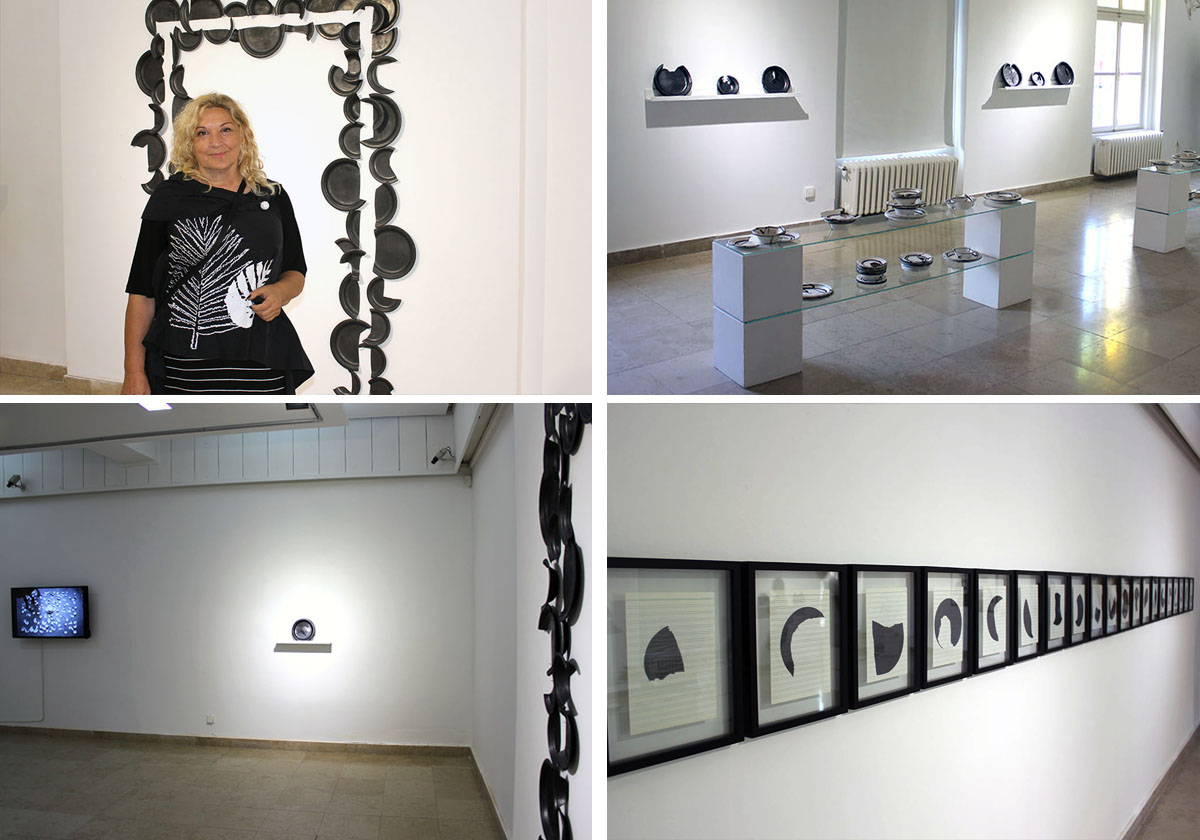
The rural landscape of DRAGOSLAV STOJANOVIĆ SIP
Exhibition of works by Dragoslav Stojanović Sip (1920-1976)
from the collection of Contemporary Gallery Zrenjanin
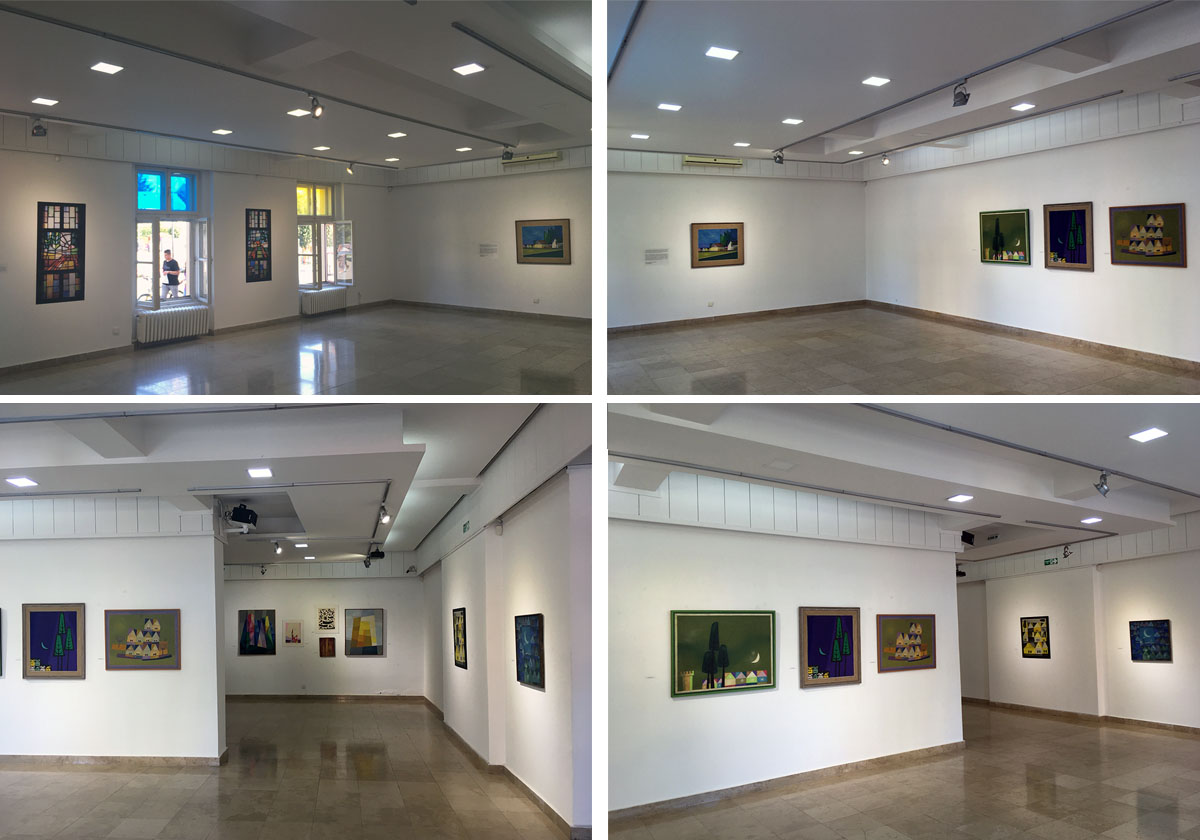
FANTASTICS
a selection from the Zrenjanin Modern Gallery Collection
12/05 - 23/06/2021
Modern gallery Zrenjanin
Freedom Square 7, Zrenjanin
May 12.-June 23., 2021.
The exhibition is being implemented within the framework of manifestations:
Museums for 10 (12.-18. May 2021.)
European museum night (May 15., 2021.)
official opening of the exhibition, Monday, May 17., 2021. at 12 pm
FANTASTICS
a selection from the Zrenjanin Modern Gallery Collection
Through the collection of the Modern Gallery Zrenjanin (founded in 1958.), which preserves the artwork created mostly in the Ečka Art Colony (founded in 1956.) you can get an insight into modern and contemporary Serbian and wider art of the Yugoslavian art space since the mid-20. s. centuries until today. Especially during the initial years since the founding of the colony from 1956. to 1964., which were filled with optimism and enthusiasm both creating a new post-war society throughout the whole and artists individually, in the Art Colony Ečka actively participated in some of the most important artistic names with these spaces that formed the artistic atmosphere of that time. After the fifty years of the 20. th century, which were marked by artistic turmoil and the fight of artists for the liberation of the artistic vocabulary since then imposed socialist dogs, during the sixties of the last century, current trends in art are moving more and more towards abstraction. However, in that period, individual artists who strived to restore figure in art report to the subject and narrative often look at classic beds and ideals left in art expressing themselves through fantasy ′′ within a reformed surrealistic program ′′ (M.B.Protic) who strived to present the real world experience through metaphor, metaphysics, as mysterious, mysterious. Miodrag B. The opposite in his part ′′ Serbian painting of the XX century ′′ believes that ′′ The roots of fantastics of the sixth and seventh decades are also in the natural influence of surrealism... Because, more than their professors, young painters were related to their friends of poets and essays educated by surrealist lecturers ... Adopting fiction and one reformed surrealistic program, they have been increasingly critical of the basic ideals of the sixth decade."
The exhibition presents works created from the mid-50 s to the end of the 80 s that show the imaginary, fantastic worlds of artists or the works can be recognized by elements of fantastic. Although the influences that stimulate this creation originate from the period of historical avant-gardens of the 20 s and 30 s, it often does not establish clear connections with them. The exhibition presents works of artists, some of which had a clear idea of introducing fantasy into their works and acknowledging the role models of historical avant-garde in the world and here, while some of the presented authors in their own way, came to their personal expression that we can link up for a fantasy. The works of the following artists were presented: Ivan Tabaković, Igor Vasilijevo, Milan Popović, Sinisa Vuković, Svetozar Samurović, Zoran Petrović, Aleksandar Luković, Lazar Vujaklje, Ksenija Divjub Ivković, Nikola Jandrijević, Stevan Maksimović, Tivadar Vanjek and Rudolf Brkić.
The author and curator of the exhibition is Sunčica Lambić-Fenjčev, the higher curator of the Modern Gallery Zrenjanin.
The Ministry of Culture and Information of the Republic of Serbia and the City of Zrenjanin provided the implementation of the exhibition.
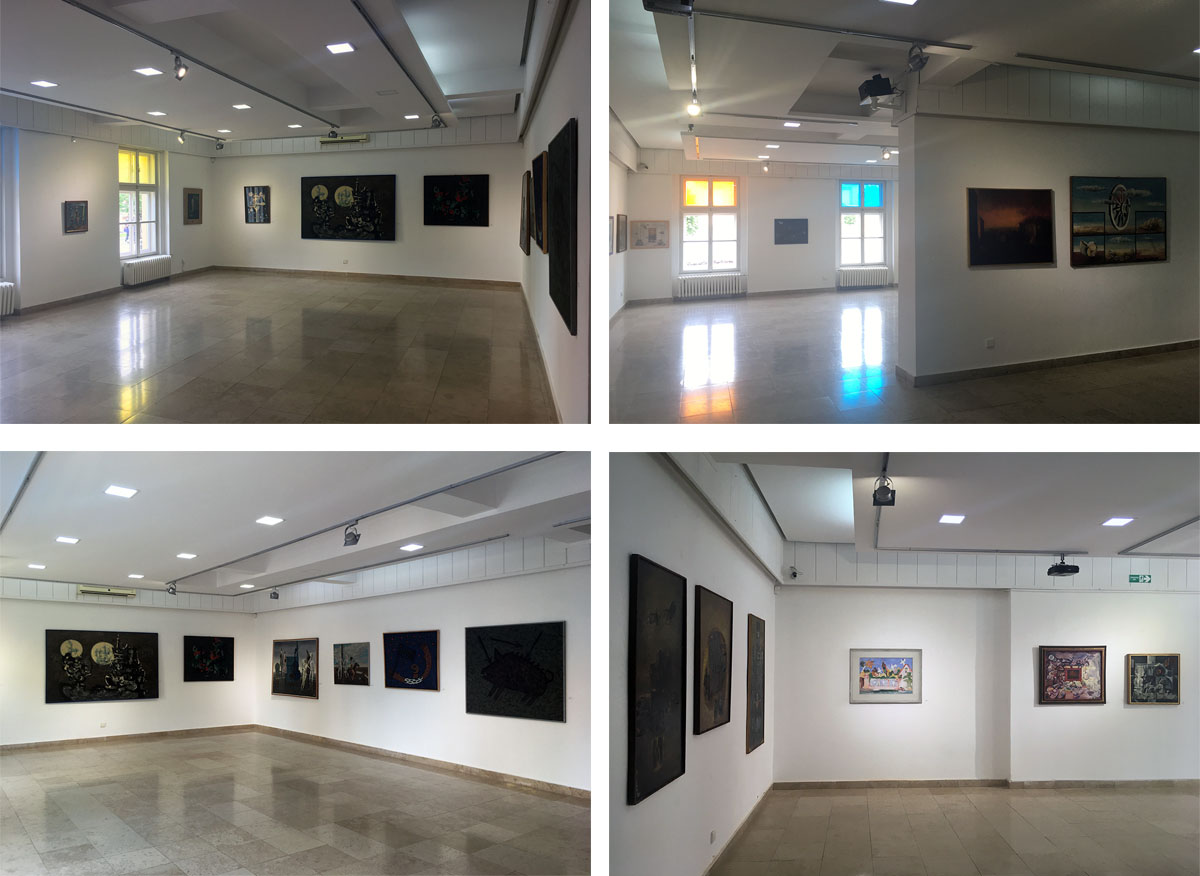
RANDOMSCAPES
ARTTERROR -Milica Lapčević and Vladimir Šojat
19/04 - 06/05/2021
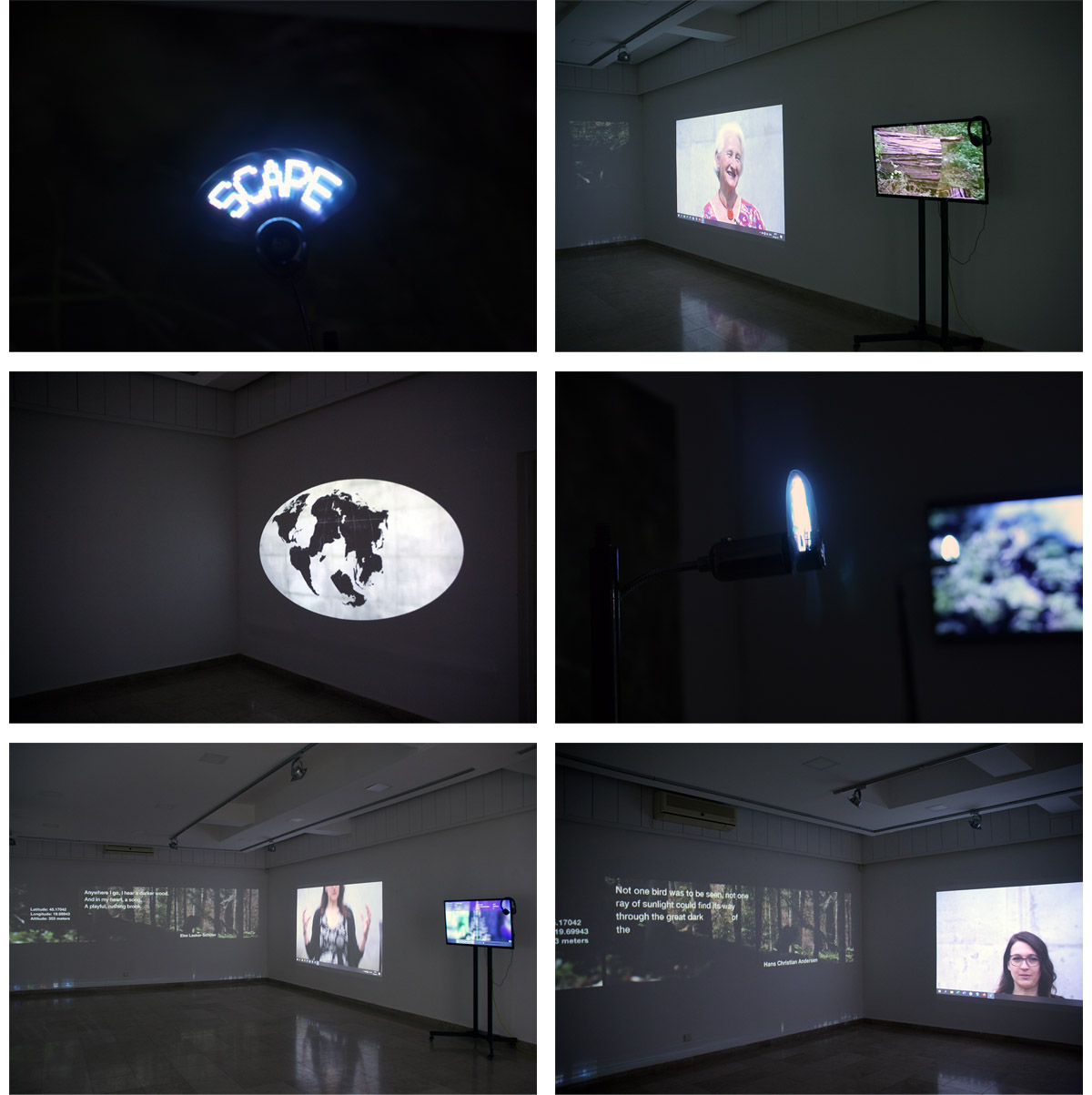
RASTKO STEFANOVIĆ
March 29 - April 15, 2021

Mirjana Đošić
March 15 - March 25 2021
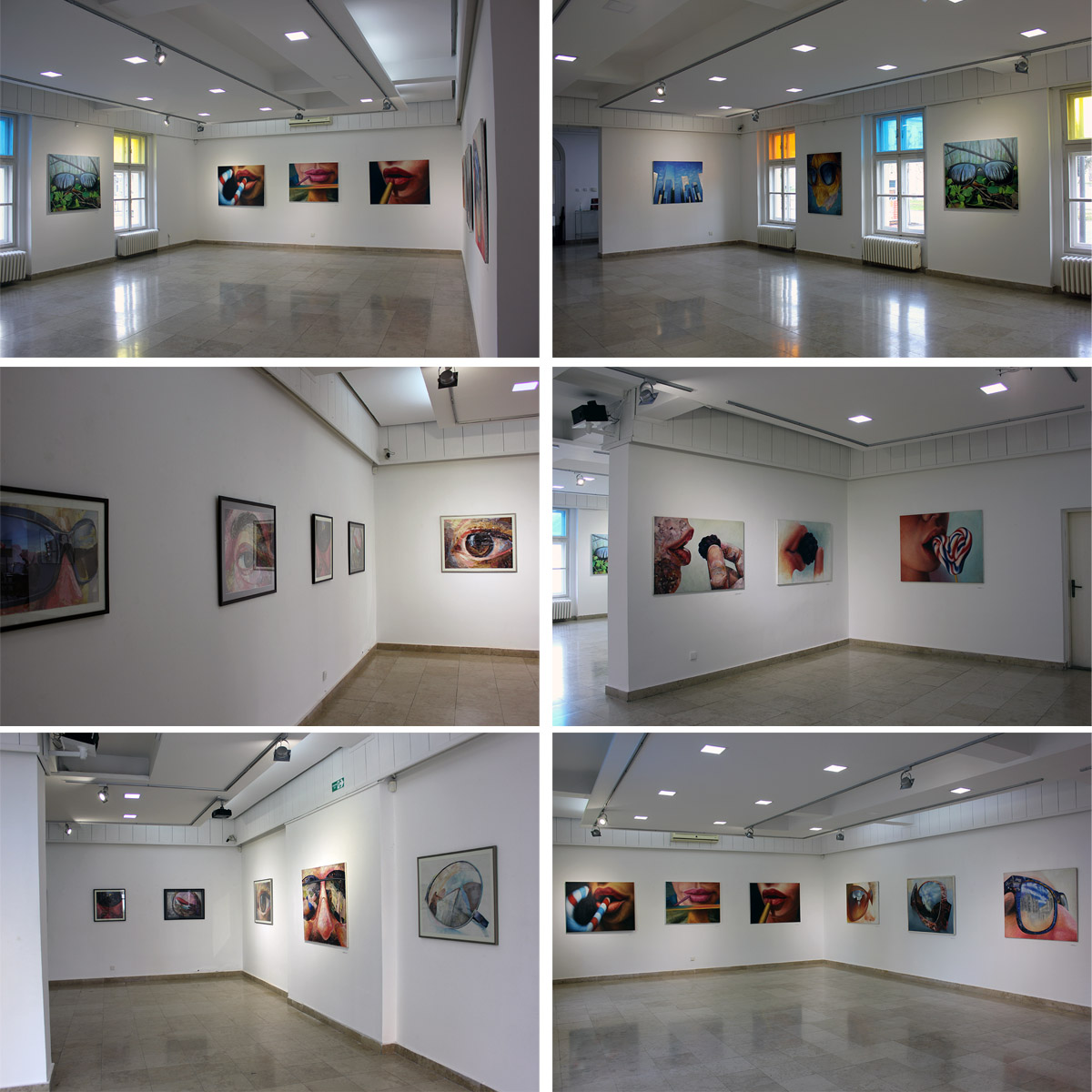
TAMARA JOVANOV
to March 11, 2021

Yugoslav art space in the space of art colony Ečka
September 7 - October 7, 2020
Sunčica Lambić - Fenjčev
YUGOSLAV ART SPACE IN THE SPACE OF ART COLONY EČKA
In the period from the mid-fifties to the late eighties of the last century, i.e. almost until the very breakup of the former SFRY, a large number of artists from the former Yugoslavia passed through Art Colony Ečka, although it seems that, at least initially, or only during their stay in the colony in Ečka, not much importance was given to that fact, given that all the participants were then part of one state. The first eight years of Art Colony in Ečka were marked by the participation of important artists for Yugoslav art. However, as events in art developed and changed over time, Ečka remained in its hermetic world, following a "middle line" of art, outside major artistic trends, following a “safe path” and nurturing “proven values”. Apart from a few important names for Yugoslav art, the colony was mostly visited by students of prominent artists such as Gabriel Stupica, Marijan Detoni, Marin Tartalja, Krsto Hegedušić, Ljuba Babić and others, completely fitting into the idea and atmosphere of Art Colony Ečka. The artistic careers of most artists - participants of Art Colony Ečka may not have been a turning point in the history of Yugoslav art, but their work is important as a document, a historical fact of a time and space, of the idea of Yugoslavia, brotherhood and unity, joint work and exchange of experiences of artists who would, only a few decades later, owing to unfortunate circumstances, become enemies. The works of some artists from the former Yugoslavia entered the collection of the Contemporary Gallery Zrenjanin as a gift from the Federal Executive Council in 1963, that is, some of the artists were never participants in the Art Colony Ečka, some works were purchased from solo exhibitions that some artists had in the Contemporary gallery Zrenjanin, or from the biennial exhibition "Landscape as a reason - space as a starting point", while most artists were welcome guests in Art Colony Ečka for years and in their works they often presented motifs of the Vojvodina plain and the surrounding area of the colony in Ečka. The exhibition presents a selection of works of art including paintings, graphics and sculptures by artists from the former Yugoslavia. The selection was made based on the personal affinity of the author of the exhibition, without the intention of favouring certain artists or certain works kept in the collection, but the basic tendency was to present the spirit of colonial activity of that time that truly exuded Yugoslavism. From the beginning of the fifties until the breakup of the so-called "Second" Yugoslavia there was a specific "art system" in this area, a phenomenon called "Yugoslav art space". Throughout the 20th century, several generations of artists cooperated with each other in the area of the so-called "First" and "Second" Yugoslavia, gathered in different groups, associations and organizations, often on close interpersonal grounds. However, the uniqueness of this system was based on the fact that it directly arose from the then ruling political and economic system in which there was no private sector in any public activity, including in the field of art, as a mechanism the Western market is generally based on. In accordance with that, the type of art of post-war moderate modernism prevailed in the entire Yugoslav art space in which artistic life took place within the fragmented and strengthened institutional framework of educational and exhibition policy.
This was also the case with the way of functioning of Art Colony Ečka in those years, which, regardless of the striving of the founders toward the freedom of artistic creation, still depended on state structures in the first place. In fact, art was liberated in the colonies, and the invited artists had the freedom to create, but in controlled conditions. By uniting, which at first took place on a friendly basis striving for free expression of their own artistic ideas, the artists - founders of the colonies created organizations in which, in the first place through the presentation of landscapes, i.e. the plain nature that surrounded them and was close both to artists and the ruling structures, the artistic language was liberated from the constraints of the heritage of traditional art, and from the dogma of the former socialist realism. The entry of abstraction into the colonies and introducing the artist to it was a great success of the colonial activity, and, once accepted by the governing structures, the organizers of the colonies did not want to lose that privilege. In that sense, the institution of Art Colony Ečka was part of the then ruling tendencies that fitted into the current "art system" and as such can contribute to a better understanding of the situation in the Yugoslav art space from the mid-fifties to the end of the eighties of the 20th century.
Rhizome:
Female Poetics of Space, Belonging and Grounding
March 2 to April 1, 2020
The identity of the woman defined through different prisms of historical, cultural and biological aspects has been one of the most prominent themes of Western art since the end of the 20th century. Maja Rakočević Cvijanov, Jelena Grujičić and Lea Vidaković shape the complex identity and role of the woman, as well as the closely related notion of home in today's society through different angles of presentation that take into account social and economic factors, gender, biological function, symbolic meanings. Works inspired by the personal experience of these three artists universalize the experience of these women. Using a specific, female, so-called "soft" handwriting, three female artists - three women, create works that exhibited together represent and permeate their reflections, emotions, issues they face daily as women, mothers, daughters, artists, in which the experience expressed by the poetics of the woman and woman's "view" is intertwined, celebrating at the same time, but also questioning the roles of birth, motherhood, and the symbol of house, home in a modern society of permanent changes and insecurity.
Maja Rakočević Cvijanov with sculpturally shaped part of the body ("Pelvis") or elements (circle) and matter (earth, clay) that symbolically indicate a woman's reproductive function, the role of a biological organism is given the meaning of a cultural artifact. Through the symbolic names and presentation of her works "Embodiment", "Grounding", "Portal", the artist presents woman's energy, fertility, birth, motherhood, the primordial being of a woman.
Besides the works performed in techniques and media present at the exhibition, which are defined as artistic (sculpture, screen printing, video work, installation or embroidery and tapestry, traditionally understood as a female way of expression, some other elements of the exhibition, such as a piece of furniture – the breastfeeding chair by Jelena Grujičić, which are associated with motherhood, breastfeeding, child-rearing - the assumed tasks that still accompany the role of the woman in the 21st century in the so-called "changed society", point to a woman and her identity, her biological role and function. Jelena Grujičić also deals with the concept of home in her series of works entitled "Home Is Where Your Heart Is", which in the present day of constant migration raises questions of house or home, whether it is a fixed place that really exists in space or is it a place that we create ourselves in our thoughts based on memories and emotions. The purpose of the work is to review the concept and meaning of home through the factors of contemporary migrations caused by the pursuit of better socio-economic living conditions.
In her video work and miniature diorama of the imaginary home space, Lea Vidaković elaborates on this theme by contrasting the idyllic representation of the warmth of the home presented in the film with a set of fragments of miniature segmented walls and scenery in the diorama, reflecting the idea that the home (at least for the artist) is not a fixed place and a stronghold, but an illusory place of refuge having the features of home and a fragile sense of security attributed to it.
The whole exhibit deals with women's intimate symbols of sexuality, pointing to the concept of a woman, a woman as a mother, a woman as a bearer of feelings related to the warmth of home, to security, to stability. But what does it all really look like in the modern world, the world of rapid changes, an unstable political, social and economic situation, which has torn apart and fragmented the concept and idea of a home originally related to the feminine principle, causing migrations, the search for a better life, making us in the 21st century again, like in the ancient past, forced to look for a place where we can feel like people? How wide is the group that can be identified through this exhibition? The concept of house, home, is sensitive to both the male and female population. These are women's poetics of space, but it would be simplistic to say that this is an exhibition that addresses only women, since the content of the exhibition is above the usual stereotypes, pointing to the very current situations of the modern society. Using rhizome as the initial word in the title of the exhibition which sounds like the fateful symbol of life, not only of these women, but of most of us, who, despite all the aspirations for independence and freedom, remain forever limited by various imposed or personal restrictions, the artists problematize the rootedness in history of a given area or belonging to a given environment, the pursuit of finding one's identity beyond gender roles, and man's eternal need for security.
Sunčica Lambić-Fenjčev
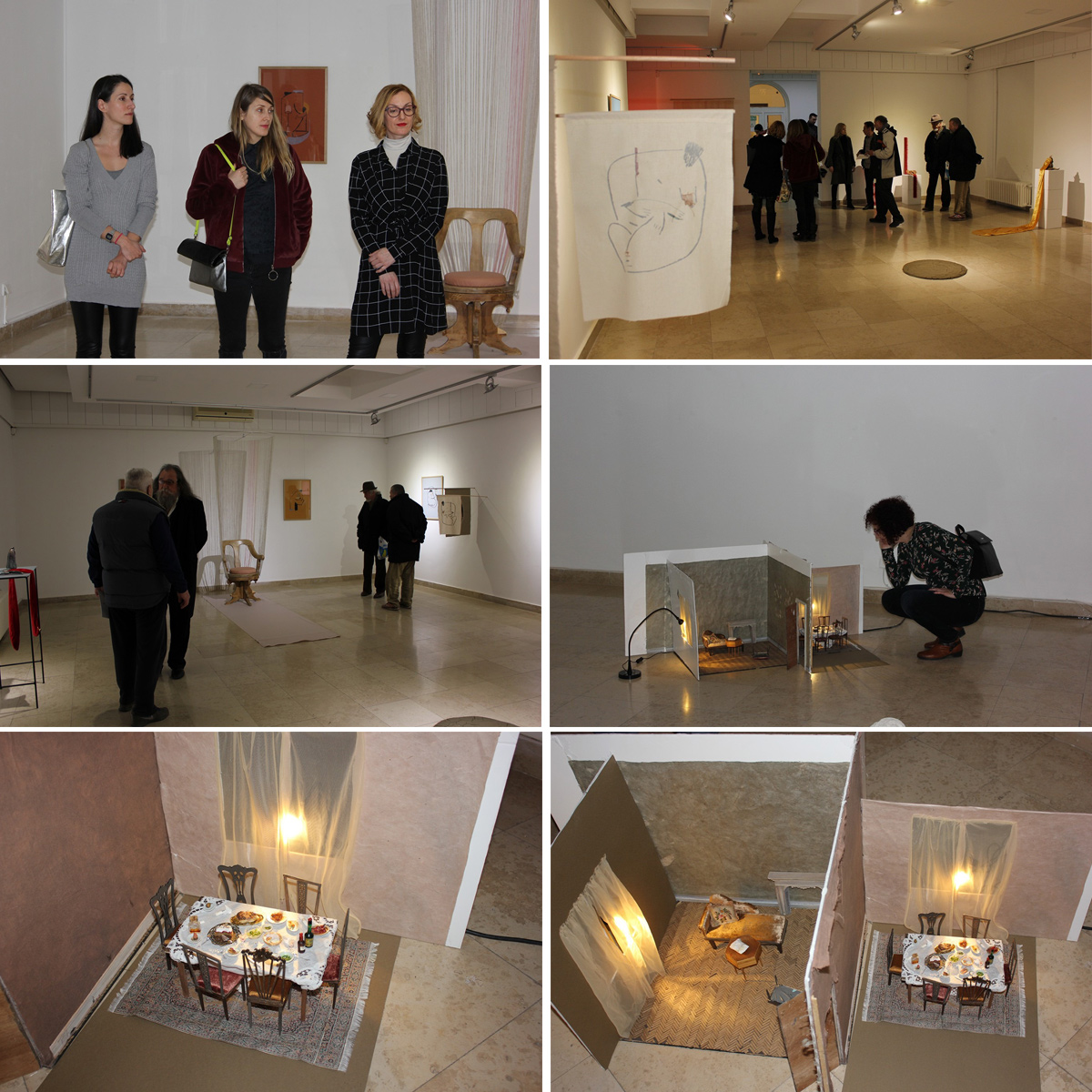
MIODRAG KRKOBABIĆ
BELEŠKE IZ SVAKODNEVICE JEDNOG NESKLADA
3 – 27 of February 2020
The Project Everyday Life of a Discord uncovers today's stereotypes, confronting the various dimensions of opposing to (un)attainable lifestyles of an individual in modern society, whose brutal signifier is the militant exclusivity of stereotypes that do not allow even subtle differences of existence to fluctuate, intertwine or naturally spread throughout.
The Project Successful Series reflects on the perception of success in contemporary society, on the one hand, and the subconscious, personal desires that contemporary artists can achieve through their field of activity in a society that has no developed economic, let alone artistic market, but through a field of activity where it is allowed and what would be sanctioned in ordinary life. As stated by Astrid Wege in the text Some Notes on the Work of Miodrag Krkobabić: "...Krkobabić approaches this topic in his “Successful Series” again from a slightly different, quite self-ironic perspective. The focus here is directed onto the different meanings the notion of success whether connoted with beauty, fame, adventure or represented in material fetishes like a hot car – may assume. He and some of his artist colleagues are portrayed with the attributes of their “personal” desires which correspond well with the stereotyped images of success contemporary society presents..."
AV installation REFLEX, through the invisible face form the garbage, in a split second, incarnates and literally personify but also brutally epitomizes one of the main issues raised by this project.
...
Miodrag Krkobabić, Graduate, Postgraduate and PhD studies at Faculty of Fine Arts, Belgrade. Specialization in Audiovisual compositions, Hochschule fur Kunste Bremen, Germany. Professor of Audiovisual compositions at the Academy of Art and Design in Belgrade.
Since 2000 exhibiting, lecturing and making projects in the public sphere worldwide, investigating the social, political and economic implications of contemporary society, taking a critical look at the way in which institutional system, marketing and politics distort our perception and attitude. 2006–2010, Artistic Director of Nadežda Petrović Memorial, Čačak, introducing a new concept and organization of the oldest Biennial exhibition in ex-YU and creating the new visual identity (together with Mirko Ilić).
Awards: 2016, Nominee for the Award of Belgrade for the visual arts, visual and extended media; 2015, Nominee for the best exhibition in Serbia in 2015; 2014, Nominee for National Pavilion at Venice biennial 2015; 2010, Nominee for Henkel Art.Award 2010, Vienna, Austria; 2006, Jury Mention – 10th Cairo International Biennale, Cairo, Egypt; 2005, KulturKontakt Grant, Vienna, Austria; 2003, DAAD Award – Deutscher Akademischer Austausch Dienst; 2003, Honorable Mention – 14th International Electronic Festival – Videobrasil, Sao Paulo; 2002, Gallery Award - 22nd Memorial of Nadežda Petrović, Čačak, Serbia; 2001, October Prize at 42nd October Salon, Belgrade, Serbia
www.krkobabic.net
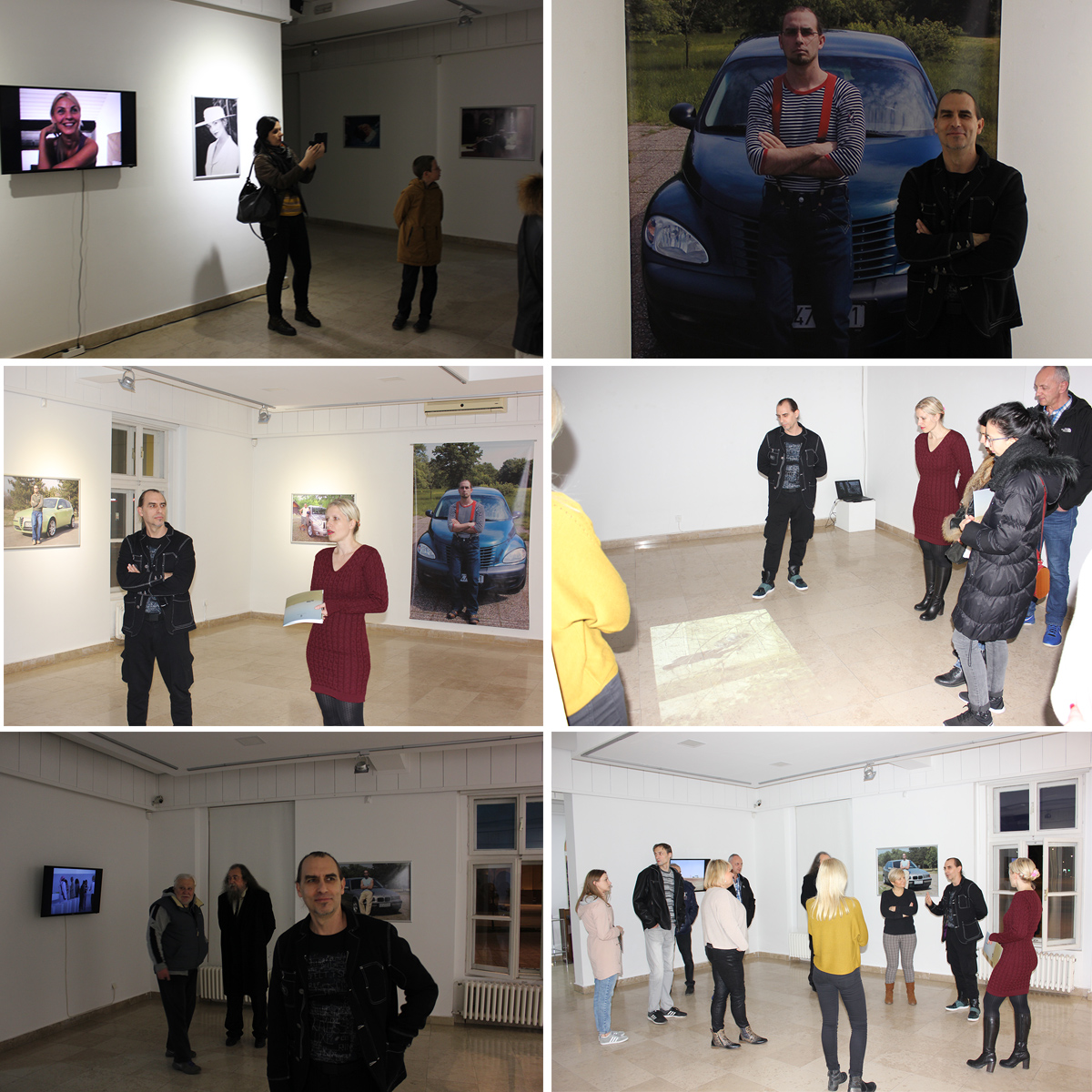
HYBRID NARRATIVES, HYBRID HISTORIES
Partcipating artists: Darko Vukić (RS), Liza Grobler (SA), Mirza Dedać (RS), Mila Panić (BiH), Igor Ripak (RS/AT), Sahar Sepahdari (IR/US), Goran Stojčetović (RS)
Curator: Nadežda Kirćanski
hybrid narratives, hybrid histories begins with the unsettling sound of multiple echoes from the past that might have something to do with us. Marianne Hirsch named it postmemory, aiming to signify a specific relationship that the new generation has to the memory of their descendants. It is an inherited narrative; the one that sometimes turns out to be rooted so deeply it appears authentic to one’s own experience. A memory that is transmitted to the new generation through images, stories, and behaviors that reflected onto their surroundings, relationships, and perspectives. A fluid, fragmented narrative, an unstable compound built by filtering the already filtered until there is a semi-curated outcome we could deal with; a hybrid narrative, emerged from the shattered pieces of something that did not deserve to be a part of the history, or at least, could not afford it.
But this new generation, on the contrary, seems to be having severe difficulties remembering things: we forgot how to remember because the Internet does not need us to remember. The Internet that has lost its claim on the capital letter as it had (invisibly but fully) penetrated our reality beyond retrieve. We keep on forgetting how to remember things, or how to develop new tools for filtering and remembering since the old ones have been severely damaged with this amount of data flow. They have burned out, leaving us unequipped right here in the middle of our post-truth digital amnesia with a half-burned motherboard that needs to be rebuilt.
Works and experiences shared in hybrid narratives, hybrid histories explore the storytelling instruments that serve a counter-history, revealing and archiving the marginal, overseen, and hidden perspectives in correlation to the post-factuality era we have entered this millennium. It offers a virtual and physical forum to discuss our role in historical knowledge production and the ways we convey these narratives and methods to the next generations.
hybrid narratives, hybrid histories is a collaborative project between Nadežda Kirćanski and HEKLER – a collaborative platform and collective that focuses on the critical examination of hospitality and conflict through art projects, pedagogy, residencies, and archive. HEKLER is founded by artists Nataša Prljević, Jelena Prljević, and Joshua Nierodzinski in New York. The project started developing in November 2018, during Nadežda Kirćanski’s residential stay at the Residency Unlimited in Brooklyn, as a part of the Mangelos Award she was awarded with in that year. Besides providing a two month residency, the Mangelos Award also includes a solo show term upon the recipient’s return to Serbia.
The project hybrid narratives, hybrid histories was conceived as a group show with an aim to dilate the usual form of such shows by taking the role of a selector/curator; this show gathers both local and regional artists, including the ones she had a chance to meet and start collaborating with in New York. The experience that had a thorough influence on scaling this into a project was meeting HEKLER’s activities and general mission which overlapped with what motivated Nadežda for the exhibition in the first place. The encounter with HEKLER platform has metabolically grown into a collaboration which resulted in this project - hybrid narratives, hybrid histories, an international art project consisting of a group show and a one-month residency in Belgrade for artists Liza Grobler and Sahar Sepahdari. The show hybrid narratives, hybrid histories was firstly presented in U10 artspace in Belgrade from 28th November till 14th December this year and will also be presented in Contemporary gallery Zrenjanin from 27th December 2019 up until 27th January 2020.
IMAGE 2019
Jelena Vladušić, Isidora Kelečević, Nora Mesaroš, Nemanja Milenković, Dario Smetiško
December 9 – 25, 2019
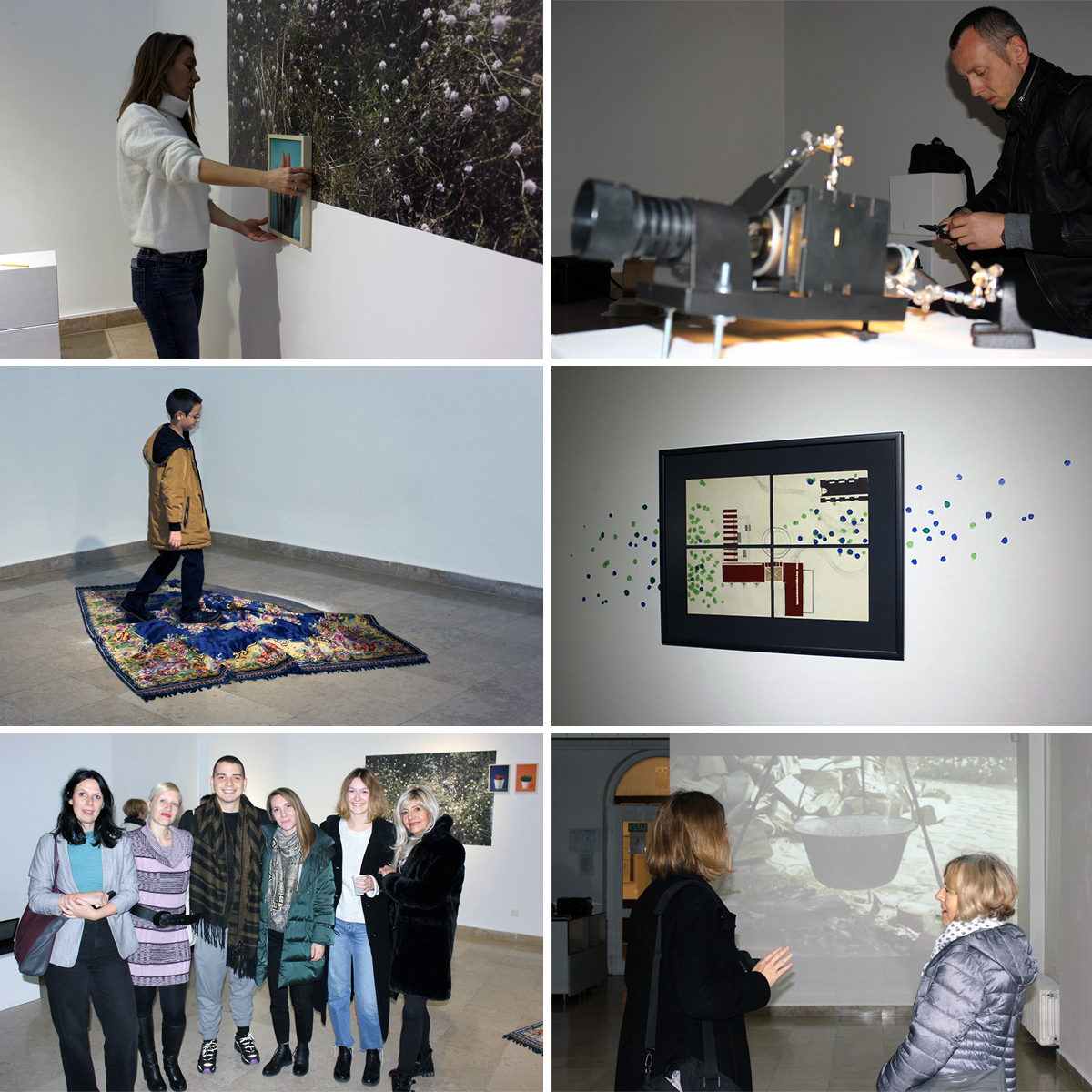
IVAN GRUBANOV
EVIL PAINTER
14 November – 5 December 2019

XIII WATERCOLOR BIENNALE
SKETCHES FOR MOVING IMAGES
October 7– November 14, 2019.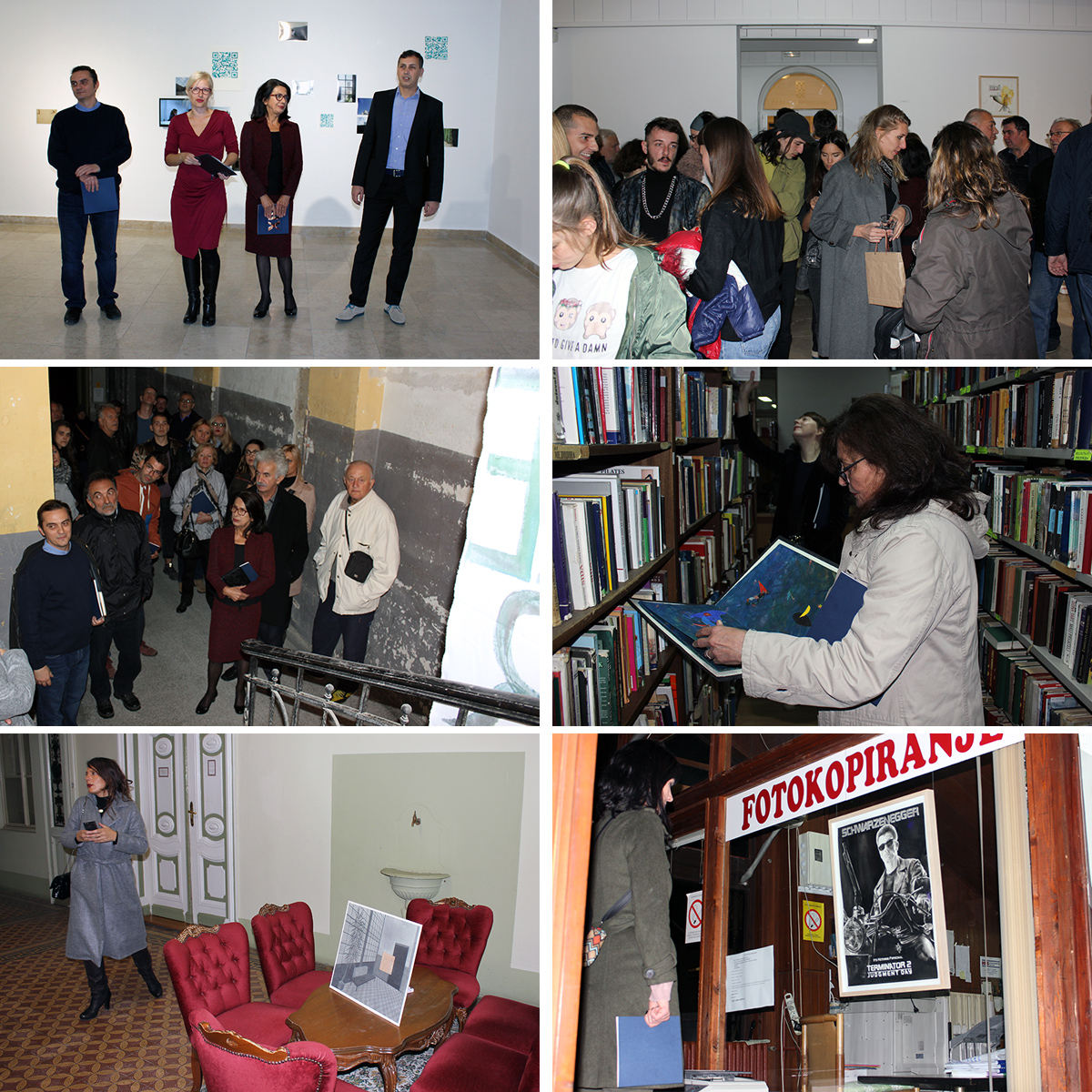
URTICA
Value, Work and Money
April 15 – May 9, 2019
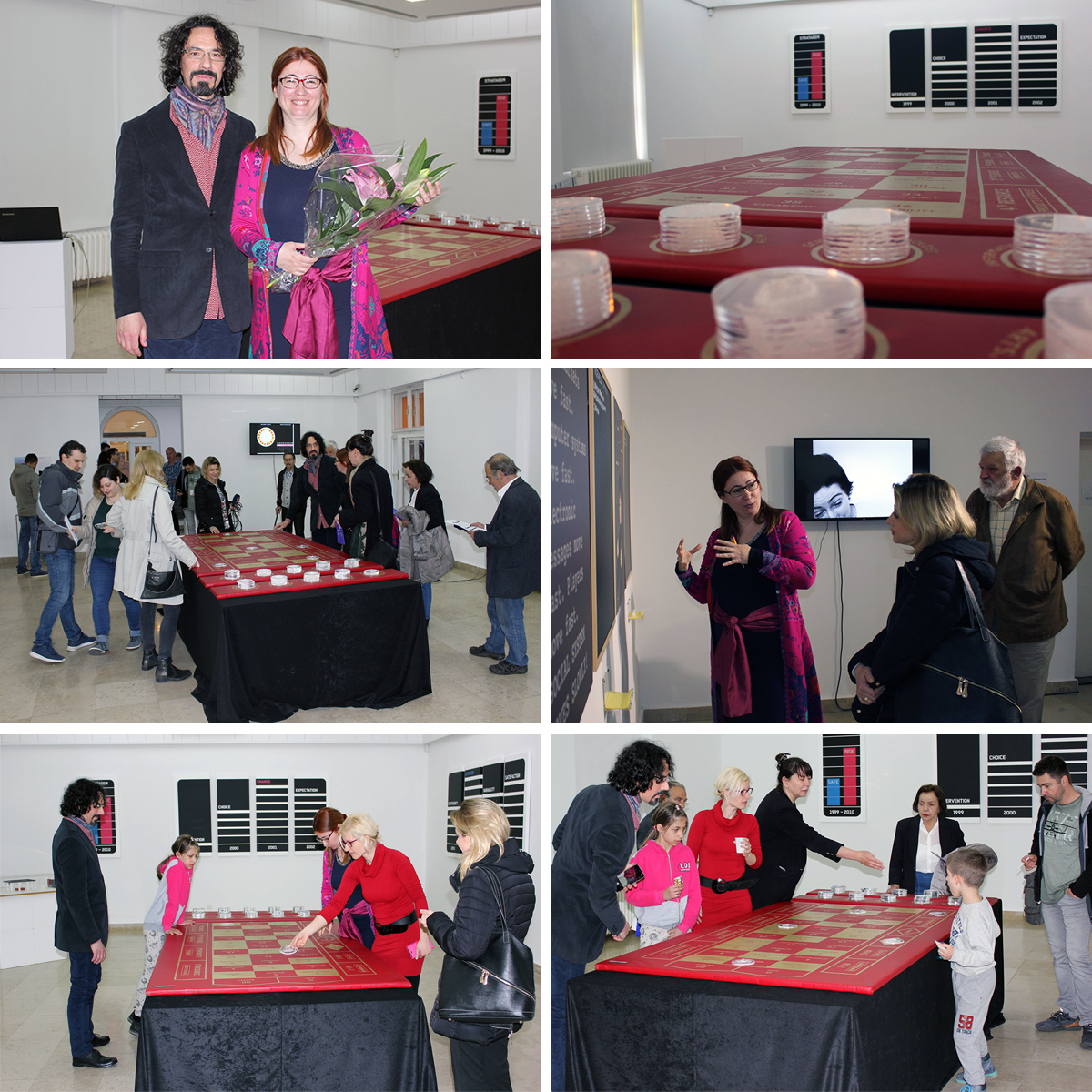
SCULPTURES
FROM THE COLLECTION OF CONTEMPORARY GALLERY ZRENJANIN (SELECTION)
March 4 – April 11, 2019
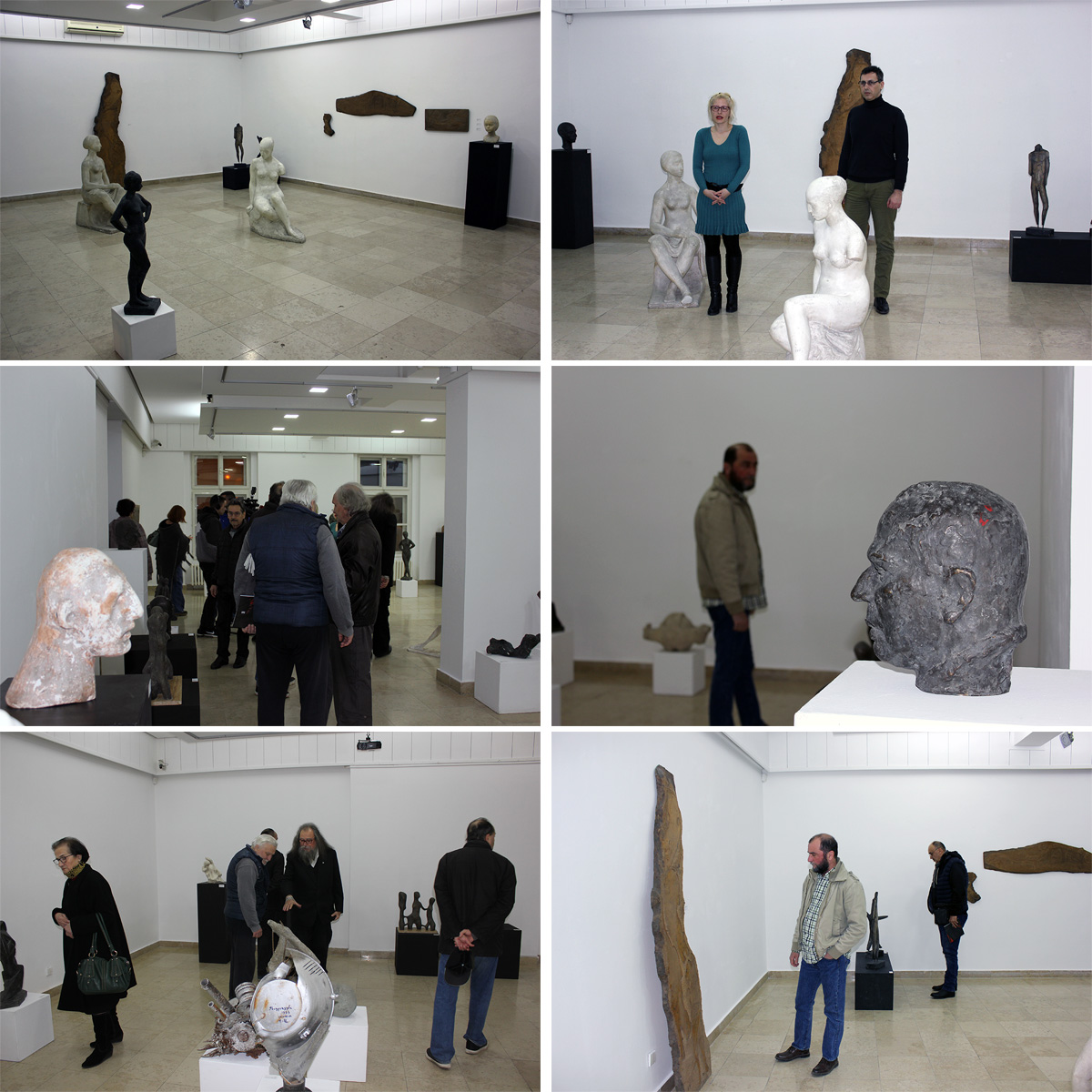
4 PAINTINGS
February 11 – February 28, 2019
NIKOLA DZAFO
MARIJA DRAGOJLOVIC
DEJAN KALUDJEROVIC
IGOR ANTIC
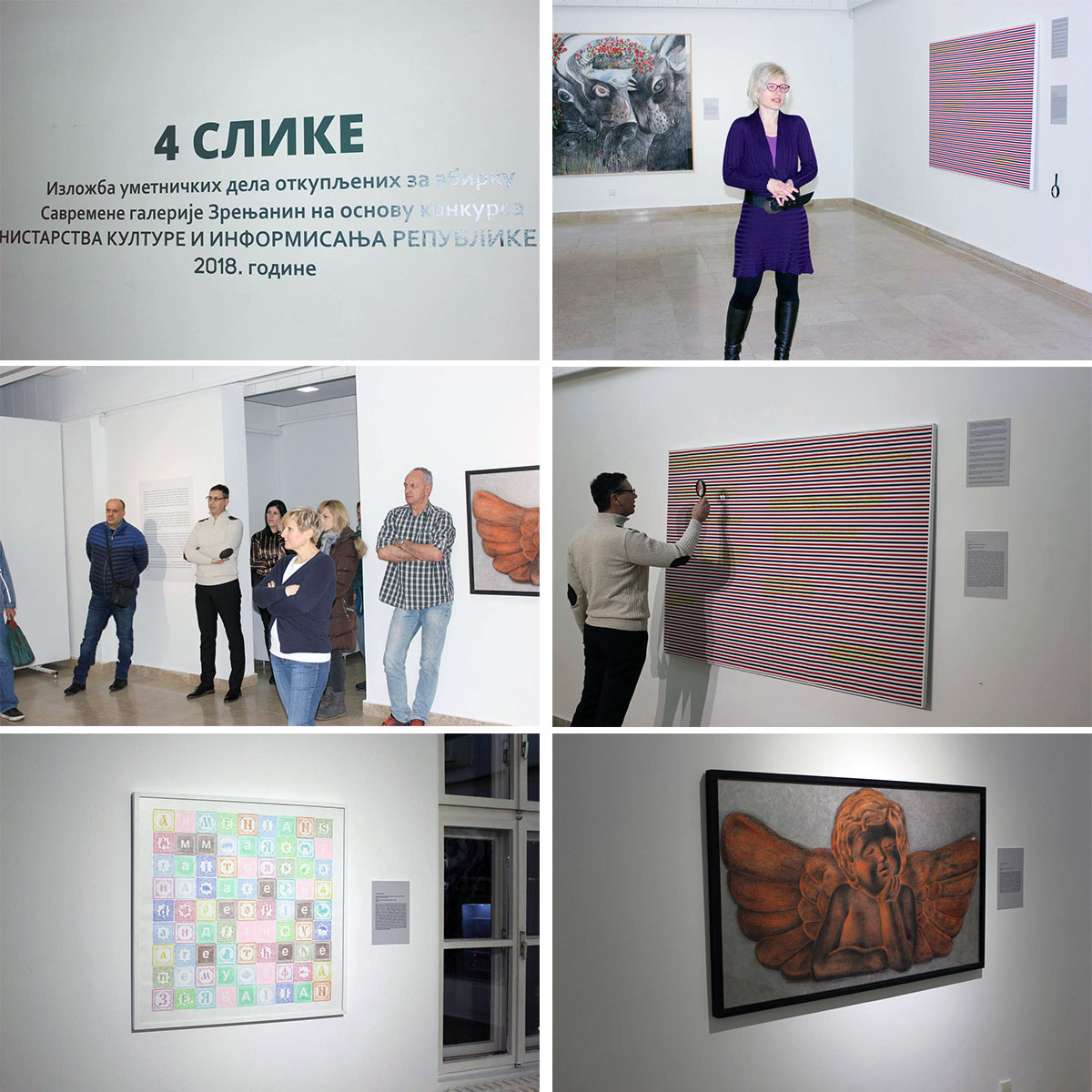
Olivera Topalov
JA - moje emocije, misao i postojanje
February 11 – February 28, 2019
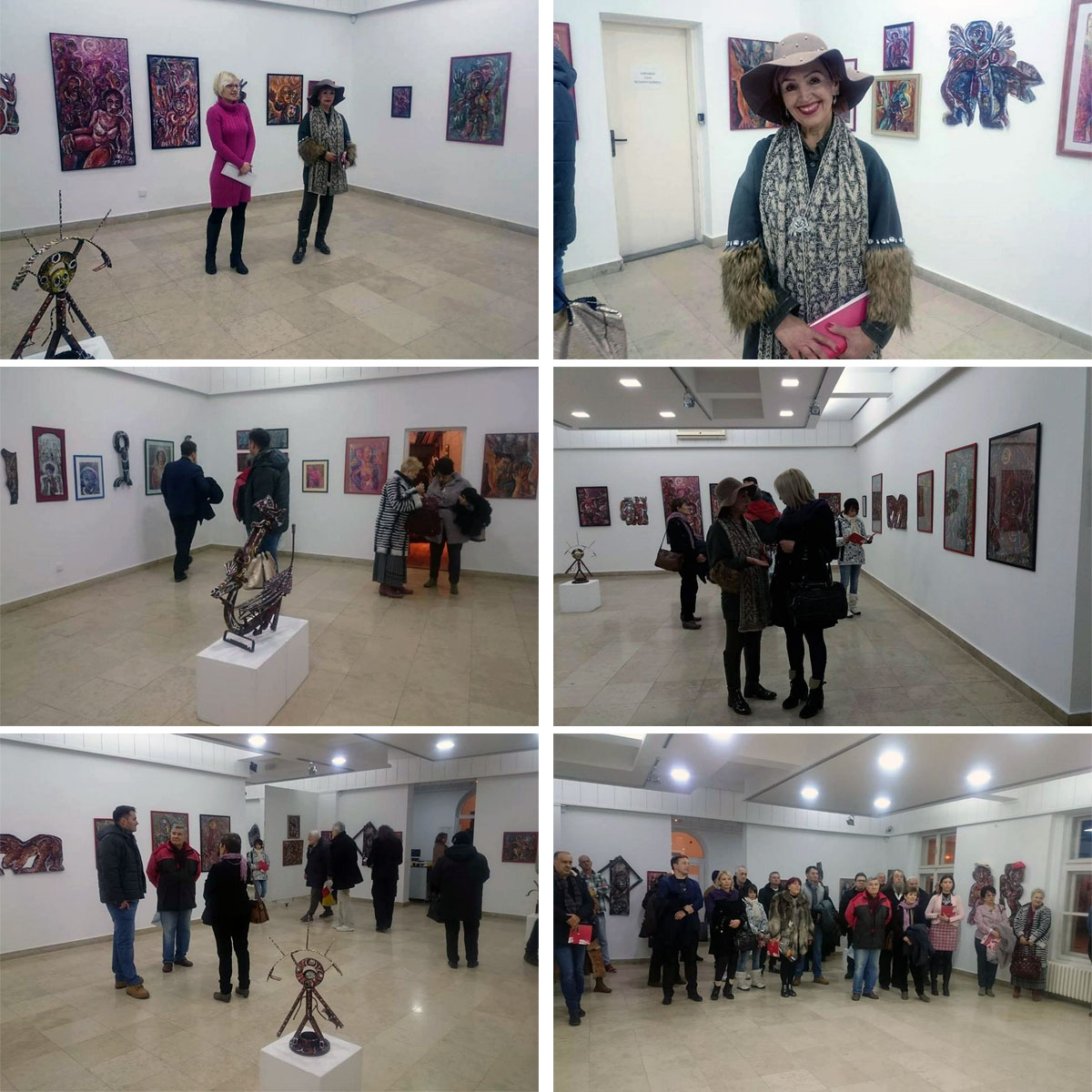
63rd GATHERING OF ART COLONY EČKA - IMAGE 2018.
10th December 2018. – 17th January 2019.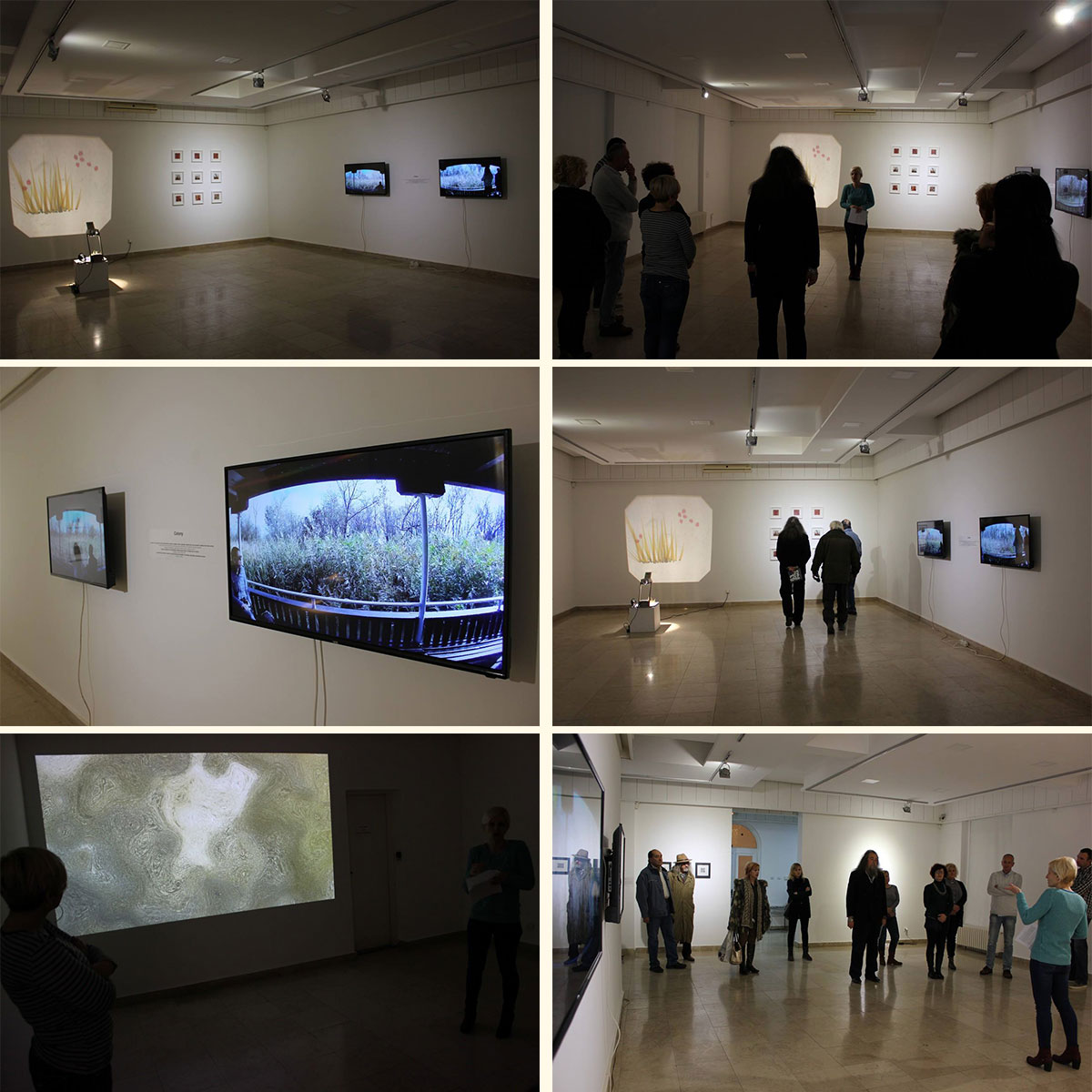
ALEKSANDRA JOVANIĆ (1976)
Aleksandra Jovanić holds a PhD in Digital Arts and a BSc in Computer Science. In her research and artistic practice she combines various media, mainly focusing on interactive art, art games and generative art. As an Assistant Professor, she currently teaches at all three levels of studies - the undergraduate programme of the Faculty of Fine Arts in Belgrade, master studies of the Faculty of Applied Arts and art doctoral studies at the University of Arts in Belgrade.
As a designer and computer programmer, she worked successfully on the development of prominent web projects, mainly in the field of culture and arts. Beside web design, she has been active in the area of graphic design and also designed film theatre and concert posters and motion graphics for films. Since 2003, she has had several solo and group exhibitions.
Aleksandra won a European Digital Art and Science Network award, in national selection for 2015.
www.aleksandrajovanic.com
KARKATAG KOLEKTIV
Karkatag is a Belgrade-based art collective founded in 2009. It works in the field of interactive art and new media, at the border with performing arts.
Karkatag works are mostly peculiar machines, usually larger ones, which, exposed or foisted to be used, bring the audience into a situation where they become an active participant, performer, and the event that is generated through their work/use is an inseparable and essential part of the realization itself.
Karkatag has so far participated in numerous exhibitions, festivals, performances in Germany, England, Austria, Poland, Croatia, Switzerland, Montenegro and several cities in Serbia. Karkatag as a part of the National Selection won the Golden Medal for launching the dialogue on the Prague Quadrilange in 2015. Also, in 2015 it won the Award for the development of the British program Gone in 20 Minutes for new and bold art projects in the open. That same year it won the prestigious Oxford Samuel Beckett Theater Trust Award and Production at the Barbican Center in London in 2016 in collaboration with the British group Collectif and then...
Karkatag has been running a residential art space in Svilajnac since 2010, and in 2015 it started an open workshop Praksa Makerspace Belgrade in Cultural Center Magacin in Kraljevića Marka Street.
Karkatag is part of the Association Independent Cultural Scene of Serbia.
www.karkatag.org
SAŠA SPAČAL (1978)
Saša Spačal is a postmedia artist working at the intersection of living systems research, contemporary and sound art. Her work focuses primarily on the posthuman continuum, where human beings exist and act as one of many elements in the ecosystem and not as sovereigns. Therefore abandoning the Cartesian system of classification and accepting the fact that the field of technology has expanded not only from hardware to software but also to wetware resulting in hybrid phenomena inscribed in mechanical, digital and organic logic.
Her work was exhibited and performed at venues and festivals such as Ars Electronica Festival (AT), Prix Cube Exhibition (FR), Transmediale Festival (DE), Onassis Cultural Center Athens (GR), Chronos Art Center (CHN), National Art Museum of China (CHN), Museum of Contemporary Art Metelkova (SI), Kapelica Gallery (SI), Device_art (CRO), Art Laboratory Berlin (DE), Museum of Contemporary Art Vojvodina (SRB), Lisboa Soa Festival (PT), Match Gallery (SI), Gallery of Contemporary Art Celje (SI). Her work was awarded Prix Ars Electronica Honorary Mention and nominated for Prix Cube.
www.agapea.si
ZORAN TODOROVIĆ (1965)
Lives and works in Belgrade. He is an associate professor at the Faculty of Fine Arts of the University of Arts in Belgrade. He gives lectures in subject Transmedial Research at the department of New Media in whose founding he was actively involved. He has been exhibiting in solo and group exhibitions since 1992 in leading home and international institutions and festivals of new media in Europe and the world, such as MMA (Museum of Modern Art) Novi Sad; Salon MMA Belgrade; MMA Zagreb; Artspace Sydney; Ars Electronica Linz; ZKM Karlsruhe; NRLA Glasgow - Perth; Lux Center, London; Transmediale Berlin; Video Marathon New York; World Information, MMA Belgrade; Blood and Honey - Essl Collection, Vienna; Austrian Cultural Forum, New York.
He represented Serbia at the 53rd Biennale in Venice.
His works are kept in significant private and national collections in the world and in Serbia. He periodically publishes essays and texts about his work and art, Art and Biotech Era, Experimental Art Foundation Inc. Adelaide, South Australia 2008, Noise, ZKM, The MIT press Cambridge, Massachusetts London, England 2002, etc.
www.zorantodorovic.com
ISIDORA TODOROVIĆ (1984)
She completed undergraduate and master studies at the New Media department at the Academy of Arts in Novi Sad. She is employed as an assistant professor at the New Art Media department at the Academy of Arts in Novi Sad, where she is currently head of the department.
The work of Isidora Todorović explores the technological, cultural and political aspects of art in the context of biopolitical theory, post-feminist theory and DIY culture. In her works she often uses the form of sociopolitical games, interactive installations and socially engaged projects. She has authored several award-winning works (The Traveling Game, One Good Day) and exhibited at national and regional festivals of electronic arts: 2013 Play Again! Games and culture conference, Košice, Slovakia; 2014 Fields exhibition, Arsenals Exhibition Hall of the Latvian National Art Museum (LNAM), Produced by RIXC, with Can You Feel The Spill? political board game/android app; 2014 SUTRA/TOMORROW, Belgrade Youth Center; 2015 Device art, Zagreb, Croatia; 2015 Wonderlab, Museum of Contemporary Art of Vojvodina, Novi Sad; 2017 “ART&SCIENCE“, Cultural Center Belgrade, European Digital Art and Science Network (in collaboration with Ars Electronica from Linz, Science Gallery from Dublin, GV Art from London, LABoral from Gijon, Etopia from Saragossa, Kapelica Gallery from Ljubljana and DIG Gallery from Košice); 2017 SUTRA/TOMORROW, Museum of Technology, Belgrade; 2017 Ars Electronica, Linz, Austria, Future innovators summit.
www.isidoratodorovic.com
Mirjana Blagojev
19th November – 6th December 2018.
MIRJANA BLAGOJEV (1974, Zrenjanin)
Graduated and earned her master’s degree in sculpture at the Academy of Arts in Novi Sad. She completed master studies at Ecole Supèrieure des Arts Décoratifs in Strasbourg, France, at the department of Object-glass. She is currently attending doctoral art studies at the Academy of Arts Novi Sad, as a part of which she did her research internship at the CTU- Faculty of Architecture in Prague in 2017. She works at the Academy of Arts in Novi Sad on the subject of sculpture as an assistant professor. Member of ULUV and ESGAA (European Studio Glass Art Association)..jpg)
39. meeting of aquarelle artists
15. of October 2018.
NADEŽDA KIRĆANSKI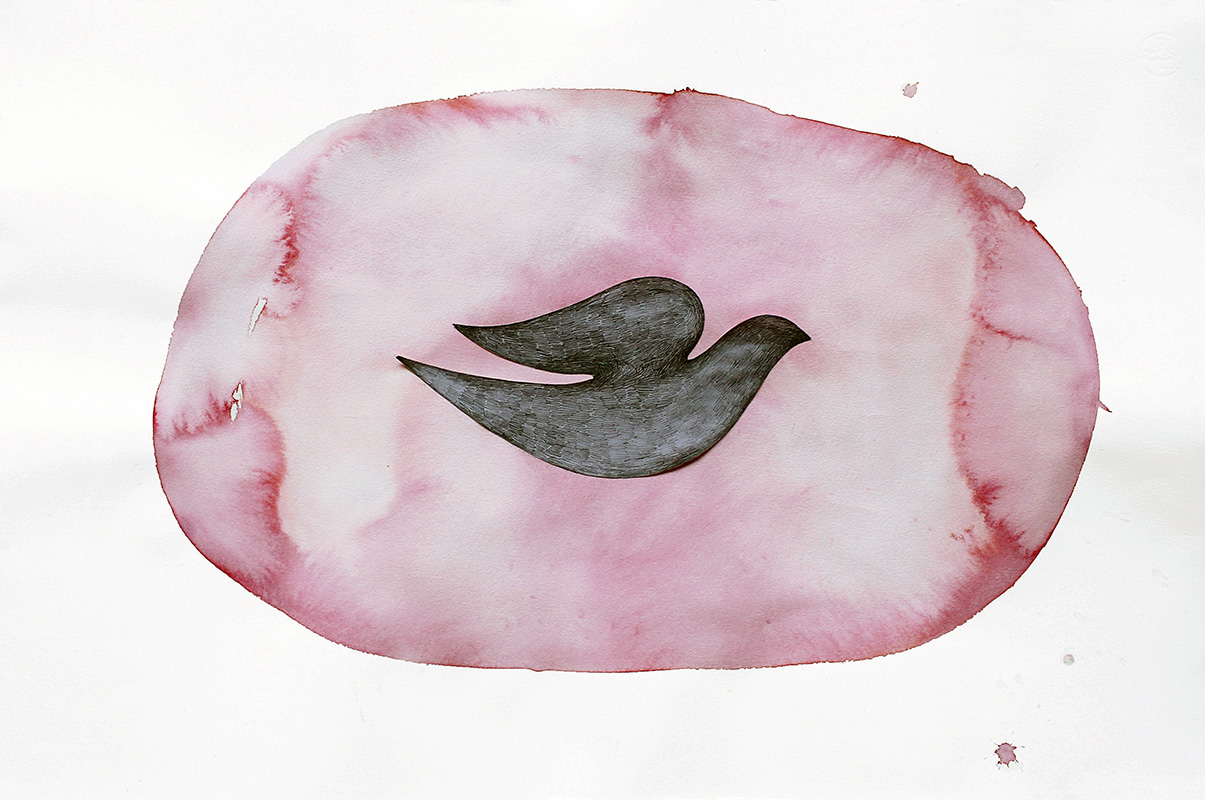
IVA KUZMANOVIĆ 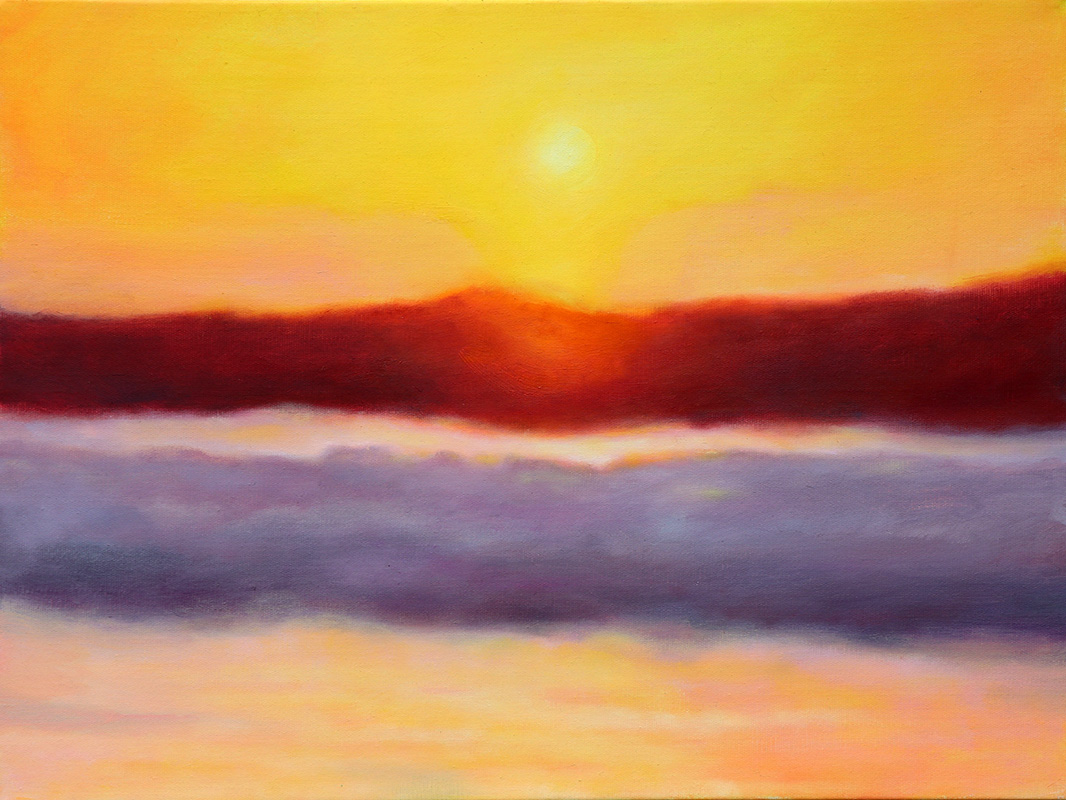
VLADIMIR MILADINOVIĆ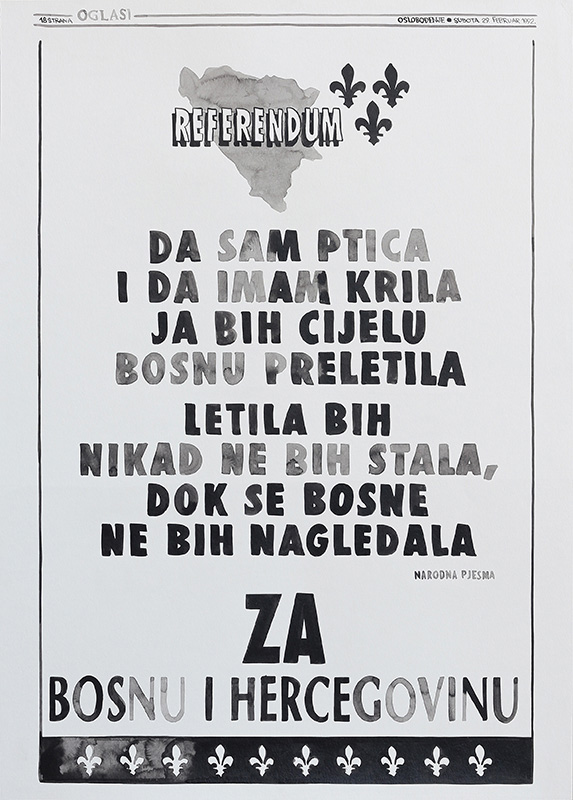
MIRJANA BOBA STOJADINOVIĆ
RADE TEPAVČEVIĆ
FASHION PHOTOGRAPHIES AND FASHION SHOW
1 – 11.of October 2018. 
SUMMER with the collection of Contemporary Gallery Zrenjanin
16th of July- 1st of September, 2018
The exhibition implies the setting of 34 works from the collection of Contemporary Gallery Zrenjanin by 22 authors, among whom are the significant names of Serbian fine arts in the mid 20th century (M.Konjović, I.Radović, I.Tabaković, N.Graovac, V.Pomorišac...) Most of these works were created in the Ečka Art Colony inspired by the summer landscapes of Vojvodina, especially in 1962, when the official theme of the work in the colony was summer. This part of the collection is complemented by works on the theme of the sea landscapes of the authors from the territory of the former Yugoslavia, which entered the collection of Contemporary Gallery as a gift from Federal Executive Council in 1963, soon after the famous Tito's speech at the Seventh Yugoslav Youth Congress when he condemned abstract art. The exhibition examines possible political influences on the work of the colony and gives the opportunity to partially review the development and formation of the collection through the work of the Art Colony Ečka, and the name itself has a dual meaning by describing the theme of the exhibition in the first place and by inviting the audience to spend some time with works from the collection of Contemporary Gallery Zrenjanin during the summer months of July and August, when the exhibition will be set, in the decades-long expectation of the permanent exhibition of the art museum of Contemporary Gallery Zrenjanin.
Curator and author of the exhibition:
Slavica Popov, senior curator
Sponsors:
Ministry of Culture and Information Republic of Serbia and City of Zrenjanin
Informations
| Address: Subotićeva 1, 23000 Zrenjanin, Serbia Showroom: Trg slobode 7, 23000 Zrenjanin, Serbia |
Cotact: 023/562-566, 561-775, 562-593 Email: galerijazr[at]galerija.rs |
Working hours: |
| w:m | nnenad |

